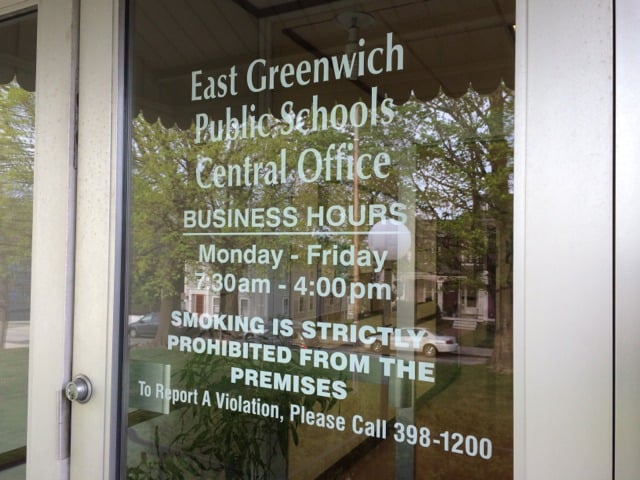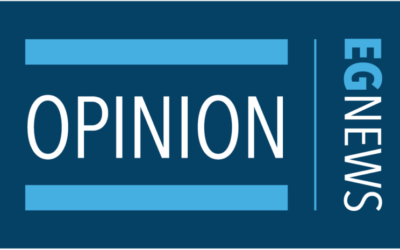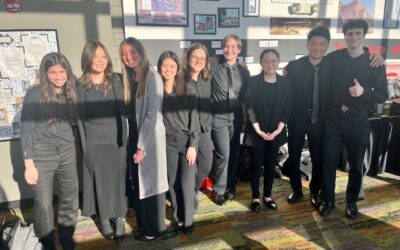The committee also discussed the potential use of federal education funds
The East Greenwich School Committee held a community forum on its work-in-progress strategic plan Tuesday night, as well as an overview of the district’s remaining ESSER funds.
According to Supt. Alexis Meyer, the district formed a steering committee – comprised of administrators, School Committee and Town Council members, teachers, parents and students – in December 2020, charged with creating a four-year strategic plan for the district.
The plan is for the committee to use community surveys and forums, data analysis and research to determine the district’s overall vision going forward. They’ve already met five times so far. After additional meetings this summer, the committee will present the full strategic plan to the School Committee on Sept. 14, and the School Committee will vote to approve it on either Oct. 5 or Oct. 19. Each school will then create individual school improvement plans aligned with the strategic plan in October or November, and these will be approved in November or December.
Meyer told the School Committee that the committee’s “vision of an East Greenwich High School graduate” requires graduates to be “knowledgeable, reflective, skilled and connected.” She explained that in order to reach this vision, the committee proposed four goals: learner success and significance; faculty and staff success and significance; successful, significant and innovative systems; and successful and significant family and community relationships.
“So while we always start with the students, in order to have a dynamic system that’s evolving to meet the needs of the school community, there isn’t a group that can be overlooked,” said Asst. Supt. Michael Podraza.
Podraza then presented several charts that described what each of the strategic goals will need for each graduate standard, which can be viewed here (33-35). He also showed the results of a survey of the EGSD community, including parents, staff and students, in which respondents were asked to evaluate how the community met the graduate vision. While the majority of respondents agreed that the district has highly skilled and caring adults delivering a student-centric curriculum, provides and equitable and fair learning environment and offered opportunities for self-assessment, there was less agreement regarding “regular and ongoing opportunities to meaningfully participate in the curriculum, instruction and assessment of students’ ongoing attainment of the District’s vision of a graduate.”
According to Podraza, the most common concerns in the open response portion of the survey were mental health, technology, class size, facilities, special education and diversity and inclusion.
Upon allowing for community discussion at the meeting, steering committee member and parent Nicole Bucka said that while the plan should be student-centered, it should not be in a rush to “get back to normal,” or similar to school pre-pandemic. For example, Bucka said that some students benefited from asynchronous Mondays, so while the district may not want to bring these back, early release or early start could be alternatives. Bucka also said students with IEPs should be allowed to receive services without getting pulled out of their other classes or at the expense of electives.
“I think we might be missing that we just spent an entire year being incredibly student centered and unconventional, and I don’t know that I’m hearing a lot of asking the students or asking the families to reflect on what we did this year that worked,” Bucka said.
Others said they found the strategic plan too ambiguous in its wording and what it was ultimately trying to accomplish.
“I found that strategic plan to be quite misleading and very vague,” Lisa Pomeroy told the committee. “There were many terms that were not very clearly defined and I know I’ve asked you and I’ve asked Ms. Meyer to help define some of these terms for me but I’m still not grasping them.”
Pomeroy asked the committee what the difference was between equality and equity, for example. After Meyer defined the terms, Pomeroy said she was also concerned that the plan’s focus on equality suggested the removal of advanced placement and honors courses. The committee said this was not there intention, and that perhaps the wording was too vague.
“If we do have the words ‘equitable outcomes,’ I would urge us to eliminate those things,” said School Committee member Tim Munoz said. “I mean that is political trigger language, and it’s also not at all the intent of what we have in mind. So I think that Mrs. Meyer explained it beautifully, it’s really about opportunity and it’s about giving every child every support and every chance for success. It has nothing to do with advantaging some people over others in terms of how they finish, and the term ‘outcome’ is unfortunate if we ever used it before we should strike it.”
Podraza later told East Greenwich News that he appreciated hearing community feedback since the plan is still a work in progress and won’t be presented until the fall.
“The best plans are the ones that remain flexible because that is the best reflection of modern schooling,” Podraza said. “While we’d like to make definitive statements, with the amount of work we’ve been able to accomplish this year I’m happy that we’ll take community feedback.”
The School Committee also discussed the potential use of federal education funds from the last two federal stimulus packages. According to Podraza, the district has $241,108 in ESSER II funds, or funds from the second federal stimulus package, and $541,494 in ESSER III funds, or funds from the third federal stimulus package. He said the funds had to be used to “support, not supplant” current initiatives. The ESSER II funds must be used by September 2022 while the ESSER III funds must be used by September 2023.
Podraza said the district is currently thinking of allocating about $694,550 in combined ESSER funds as follows: $17,250 in an enrichment program with the parks and recreation department; $29,160 in academic credit recovery; $59,250 in training faculty in “the science of reading and structure literacy” under the Right to Read Act; $240,000 for two years salary and benefits for a multi-tiered system support (MTSS) coordinator; $120,000 for partially funding a school psychologist; $200,000 for partially funding a math specialist; and $28,890 in air filtration. Podraza said these initiatives could help address learning loss, socio-emotional health and COVID-19 safety as guided by state and federal guidelines for the funds’ usage.






 Subscribe
Subscribe